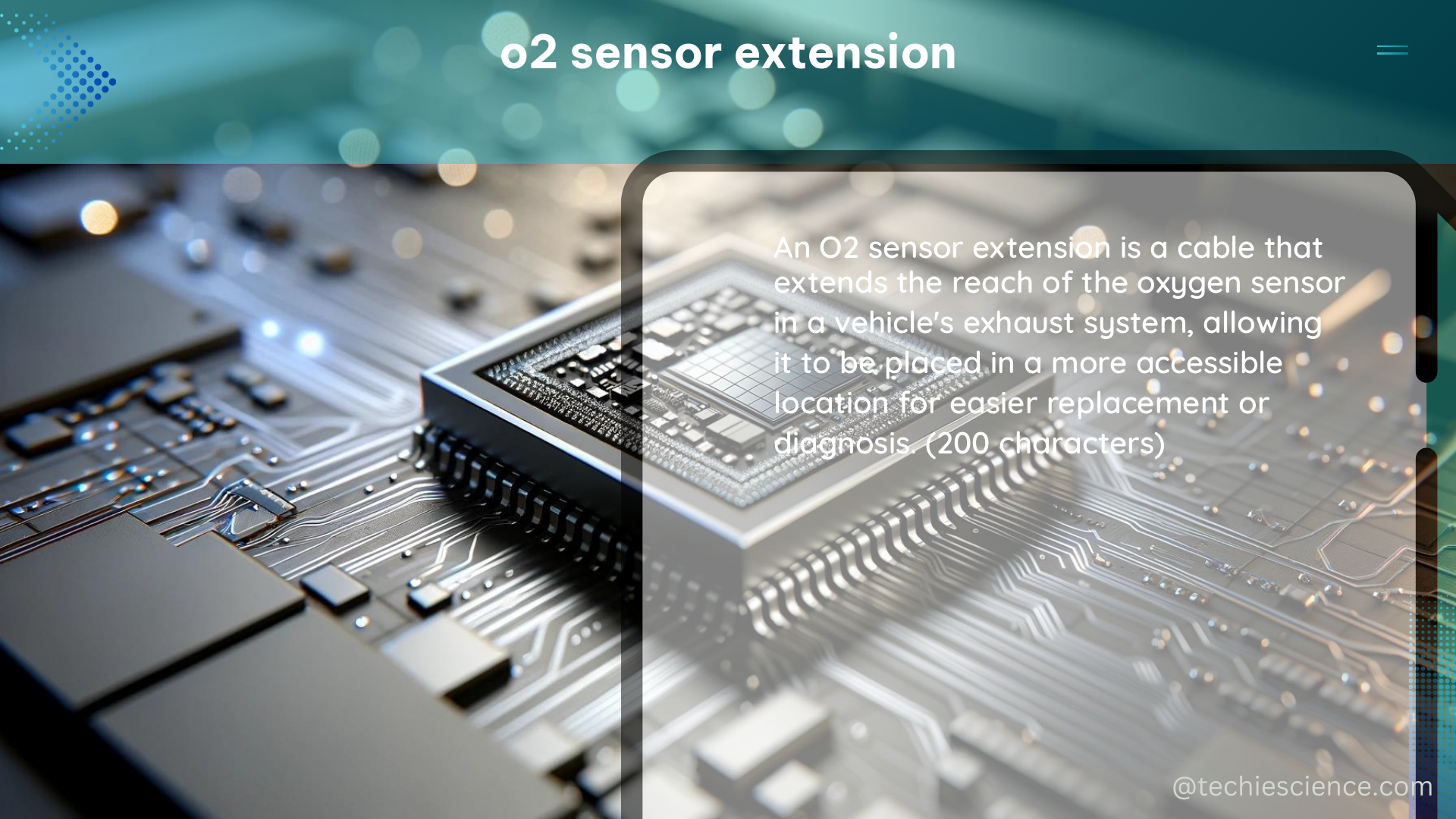O2 sensor extensions are a popular modification among automotive enthusiasts and mechanics looking to enhance engine performance, improve diagnostics, and troubleshoot issues. These extensions allow for the relocation or lengthening of the oxygen sensors, providing greater flexibility and access for tuning and maintenance. In this comprehensive guide, we’ll delve into the technical details, considerations, and best practices for implementing O2 sensor extensions.
Understanding Oxygen Sensors and Air-Fuel Ratio
Oxygen sensors, or O2 sensors, are critical components in modern vehicles, responsible for monitoring the air-fuel ratio in the engine’s exhaust. These sensors measure the amount of unburned oxygen in the exhaust, providing feedback to the engine control unit (ECU) to ensure optimal combustion and emissions control.
There are two main types of O2 sensors:
-
Narrowband O2 Sensors: These sensors can only detect if the air-fuel ratio is at the stoichiometric point of 14.7:1, which is the ideal ratio for complete combustion. They provide a simple binary signal to the ECU, indicating whether the mixture is rich (too much fuel) or lean (too much air).
-
Wideband O2 Sensors: These sensors can measure a wider range of air-fuel ratios, typically from 9.65:1 to 20:1. This allows for more precise tuning and optimization of the engine’s performance, as the ECU can make finer adjustments to the fuel delivery.
Reasons for Extending O2 Sensor Wires

There are several reasons why automotive enthusiasts and mechanics may choose to extend the wires of their O2 sensors:
-
Sensor Relocation: Moving the O2 sensor to a different location, such as further downstream in the exhaust system, can provide more accurate readings or better access for maintenance and diagnostics.
-
Improved Tuning and Performance: Extending the wires of a wideband O2 sensor allows for the sensor to be positioned in a more optimal location, enabling more precise tuning and optimization of the engine’s air-fuel ratio for increased power, efficiency, and emissions control.
-
Diagnostics and Troubleshooting: Extending the O2 sensor wires can make it easier to access and monitor the sensor, facilitating diagnostic procedures and troubleshooting of engine-related issues.
Considerations for O2 Sensor Extensions
When extending the wires of an O2 sensor, there are several important factors to consider:
Resistance and Wire Gauge
One of the primary concerns when extending O2 sensor wires is the impact on the circuit’s resistance. Ohm’s law states that the resistance of a wire is directly proportional to its length and inversely proportional to its cross-sectional area (wire gauge). Extending the wires will increase the resistance, which can lead to inaccurate readings and potential performance issues.
To mitigate this, it’s essential to calculate the correct length and gauge of the replacement wires to match the original resistance. For example, if you have 12 inches of 20-gauge OEM wiring with a resistance of 0.0103632 Ohms, you would need approximately 48.28 inches of 14-gauge wire to maintain the same resistance.
Voltage and Signal Integrity
Extending the O2 sensor wires can also affect the voltage and signal integrity of the sensor’s output. Longer wires can introduce noise, interference, and voltage drops, which can cause the ECU to receive inaccurate readings. To mitigate these issues, it’s recommended to use high-quality, shielded wires and connectors designed for O2 sensor applications.
Sensor Type and Compatibility
When extending O2 sensor wires, it’s crucial to ensure that the replacement wires and connectors are compatible with the specific type of O2 sensor being used (narrowband or wideband). Mixing incompatible components can lead to sensor failure, incorrect readings, and potential engine damage.
Routing and Securing the Wires
Proper routing and securing of the extended O2 sensor wires are essential to prevent damage, interference, and potential safety hazards. The wires should be routed away from high-heat areas, sharp edges, and moving components, and secured using heat-resistant, non-conductive fasteners or loom.
Sensor Calibration and Adaptation
After extending the O2 sensor wires, it may be necessary to recalibrate or adapt the sensor to the new configuration. This can involve resetting the ECU, performing sensor learning procedures, or using specialized diagnostic tools to ensure the sensor is properly integrated with the engine management system.
O2 Sensor Extension Kits and Accessories
To simplify the process of extending O2 sensor wires, many manufacturers offer specialized extension kits. These kits typically include:
- High-quality, shielded extension wires in various lengths and gauges
- Weatherproof connectors and terminals
- Mounting hardware and cable management accessories
- Instructions and guidelines for proper installation and configuration
Using a dedicated O2 sensor extension kit can help ensure the integrity of the sensor’s signal, maintain resistance values, and provide a clean, organized installation.
Conclusion
O2 sensor extensions offer a versatile solution for automotive enthusiasts and mechanics looking to optimize engine performance, improve diagnostics, and troubleshoot issues. By understanding the technical considerations, such as resistance, voltage, and sensor compatibility, you can successfully implement O2 sensor extensions and unlock the full potential of your vehicle’s engine management system.
Remember to always consult the manufacturer’s recommendations, follow best practices, and consider the use of specialized extension kits to ensure a safe and reliable installation. With the right approach, O2 sensor extensions can be a valuable tool in your automotive tuning and maintenance arsenal.
References:
– Harley Davidson Forums – Upgrading to Wideband O2 Sensors
– ADVRider – Effect of Oxygen Sensor Spacer
– LS1Tech – Extending O2 Sensor Wires
– 8th Civic – Proper Way to Extend O2 Sensor

The lambdageeks.com Core SME Team is a group of experienced subject matter experts from diverse scientific and technical fields including Physics, Chemistry, Technology,Electronics & Electrical Engineering, Automotive, Mechanical Engineering. Our team collaborates to create high-quality, well-researched articles on a wide range of science and technology topics for the lambdageeks.com website.
All Our Senior SME are having more than 7 Years of experience in the respective fields . They are either Working Industry Professionals or assocaited With different Universities. Refer Our Authors Page to get to know About our Core SMEs.